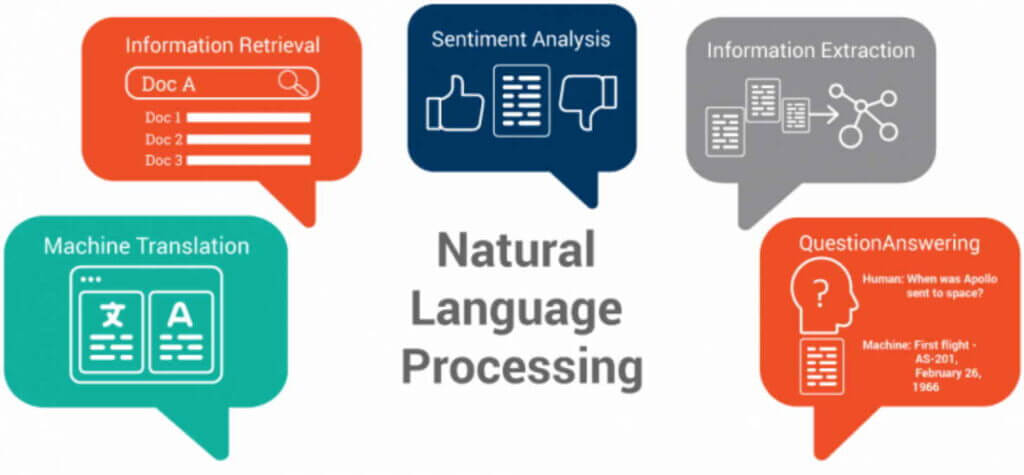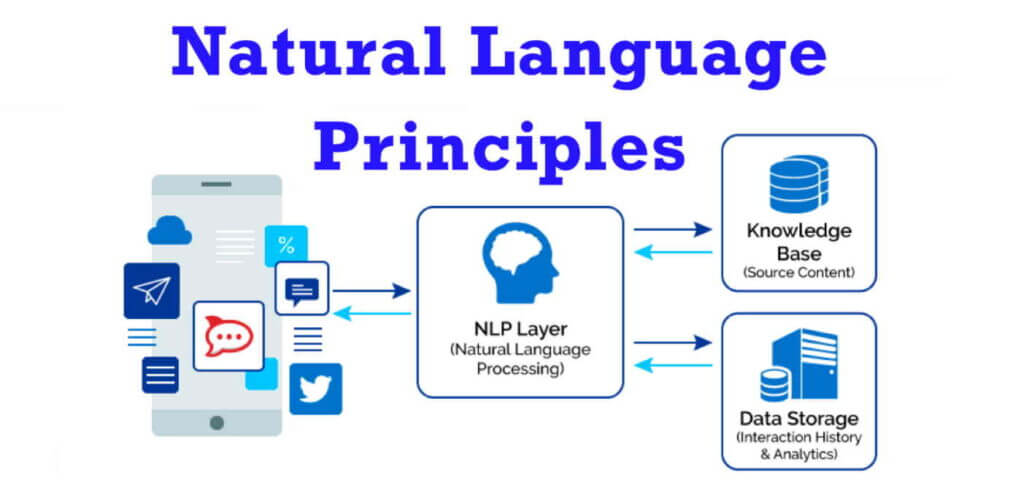What is Natural Language Processing (NLP)?
A computer program’s capacity to comprehend natural language, or human language as it is spoken and written, is known as natural language processing (NLP). It is a part of machine intelligence (AI).
NLP has been around for more than 50 years and has linguistic origins. It has several practical uses in various industries, including corporate intelligence, search engines, and medical research.
Natural Language Processing
The field of computer science known as “natural language processing” (NLP) is more particularly the field of “artificial intelligence” (AI) that is concerned with providing computers with the capacity to comprehend written and spoken words like that of humans.
NLP blends statistical, machine learning, and deep learning models with computational linguistics—rule-based modelling of human language.
With these technologies, computers can now interpret human language in the form of text or audio data and fully “understand” what is being said or written, including the speaker’s or writer’s intentions and mood.

Computer programmes that translate text between languages, reply to spoken commands, and quickly summarise vast amounts of text—even in real-time—are all powered by NLP.
How does Natural Language Processing (NLP) Work?
Thanks to NLP, computers can now comprehend natural language just like people do. Natural language processing uses artificial intelligence to take real-world information, process it, and make sense of it in a way that a computer can comprehend, regardless of whether the language is spoken or written.
Computers have reading programmes and microphones to gather audio, much as people have various sensors like ears to hear and eyes to see.
Computers have a programme to process their various inputs, just as humans have brains. The input is eventually translated into computer-readable code during processing.
The creation of algorithms and data preparation are the two fundamental stages of natural language processing.
Preparing and “cleaning” text data so that computers can examine it is known as data preparation. Preprocessing prepares data for use and emphasises text characteristics that an algorithm can use. This can be accomplished in many ways, including
Tokenisation
Text is divided into manageable chunks at this point.
Halt word deletion – Common words are eliminated in this case, leaving just the special words that reveal the most about the text.
Stemming and lemmatisation
Words are boiled down to their basic components at this point for processing.
Using part-of-speech tags
Words are then labelled according to the part of speech they belong to, such as nouns, verbs, and adjectives.
An algorithm is created to process the data once it has undergone preprocessing. Natural language processing algorithms come in a wide variety, but two basic categories are most frequently used:
System based on rules
The language rules of this system were thoughtfully created. The usage of this strategy dates back to the early stages of the development of natural language processing.

System based on machine learning
Statistical techniques are used in machine learning algorithms. They are fed training data to help them learn how to execute tasks, and when additional training data is processed, they modify their techniques.
The algorithms used in natural language processing refine their own rules through repeated processing and learning using a combination of machine learning, deep learning, and neural networks.
Techniques used in Natural Language Processing
Natural language processing primarily employs two techniques: syntax analysis and semantic analysis.
The placement of words in a phrase to ensure proper grammar is known as syntax. NLP uses syntax to evaluate a language’s meaning based on grammatical rules. Several syntax strategies are:
Parsing
This is a sentence’s grammatical analysis. As an example, the phrase “The dog barked” is supplied to a natural language processing system. Parsing was dividing this statement into component pieces, such as dog as a noun and barked as a verb. For more difficult downstream processing jobs, this is helpful.
Segmenting words
This is the process of extracting word formations from a string of text. An individual scans a handwritten paper into a computer, for instance. The algorithm could examine the page and identify that white spaces separate the text.
Sentence fragments In lengthy texts, this establishes sentence boundaries. Example: Text is input into a natural language processing system, “The canine yipped. I awoke.” The sentence breaking used by the algorithm to break up the sentences is the period.
Segmentation of morphology
As a result, words are split up into units known as morphemes. As an illustration, the algorithm would convert the word untestable into [[un[[test]able]]ly, where “un,” “test,” “able,” and “ly” are all recognised as morphemes.
Speech recognition and machine translation both benefit greatly from this.
Stemming
In this way, words with inflection are separated into their base forms. The algorithm would be able to identify the word “barked” as having the root “bark” in the phrase “The dog barked.”
It would be helpful if a user searched a text for every occurrence of the term bark and its verb forms. Even when the characters are different, the computer can still tell that they are fundamentally the same word. Semantics deals with the use of language and its underlying meaning. Algorithms are used in natural language processing to comprehend sentence structure and meaning. Semantic methods consist of:
Language sense clarification
This uses context to determine a word’s meaning. Example: Think about the phrase “The pig is in the pen.” There are several meanings for the word pen. This approach enables an algorithm to recognise that the term “pen” in this context refers to a fenced-in space rather than a writing tool.
Acknowledgement of named entities
This establishes which words may be divided into groups. Using this technique, an algorithm may examine a news story and find any references to a specific business or item. It would be able to distinguish between items that seem the same using the semantics of the text.
Creating natural language
Identifying the meaning of words and creating new text requires a database. Example: By associating specific terms and phrases with aspects of the data in the BI platform, an algorithm may automatically produce a summary of findings from the BI platform.
Another illustration would be the automatic creation of news stories or tweets based on a certain body of training content.
Deep learning, a branch of AI that looks for and exploits patterns in data to enhance a program’s comprehension, is the foundation of current methods for natural language processing.
Usage and Example of Natural Language Processing
The following are some of the primary tasks carried out by natural language processing algorithms:
Text categorisation
This entails giving text tags in order to categorise them. This may be helpful for sentiment analysis, which aids the NLP system in figuring out the emotion or sentiment behind a text. For instance, the algorithm can compute the proportion of good and negative mentions of brand A when it appears in X letters.
As a way to forecast what the speaker or writer could do based on the language they are generating, it can also be helpful for intent detection.
Extraction of text
Automatic text summarisation and data extraction are required for this. One example of search engine optimisation is keyword extraction, which selects the most important terms from the text. Natural language processing can be used, but it still takes some programming.
The user has to configure the program’s parameters because several straightforward keyword extraction solutions automate the majority of the procedure. For instance, a tool may highlight the text’s most frequently occurring terms. Extracting names of people, places, and other entities from text is another form of named entity recognition.
Automated translation
This is the method through which a computer translates text automatically from one language, like English, to another, like French.
Creating natural language
This entails analysing unstructured data using natural language processing algorithms and automatically creating content utilising that data. Language models like GPT3, which can evaluate an unstructured text and then produce credible articles based on the content, are one example of this.

